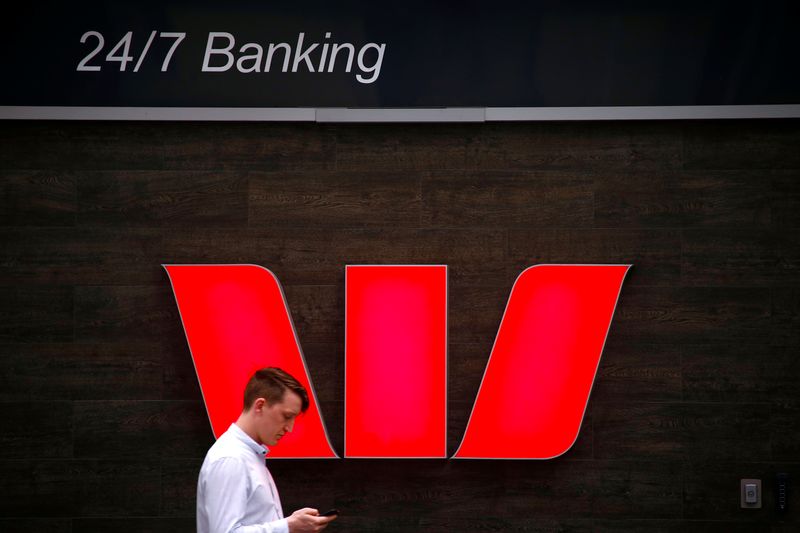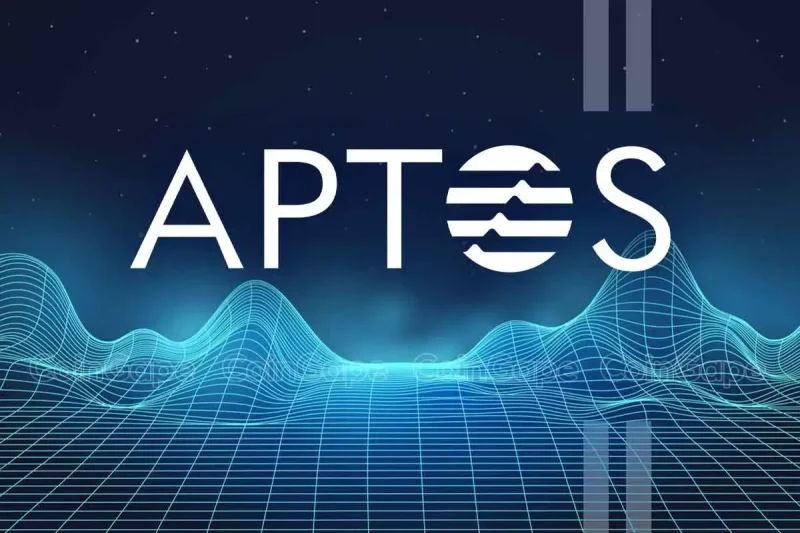Earnings call: Preferred Bank posts strong Q3 results, eyes stable margins

In the third quarter of 2024, Preferred Bank (NASDAQ:PFBC) reported a net income of $33.6 million, or $2.46 per share. The bank experienced significant loan growth and an improved net interest margin, with an efficiency ratio of 30.6%. Despite an increase in criticized loans attributed to one relationship and a slight decrease in deposits, the bank’s overall financial health appears robust.
Management is optimistic about maintaining a stable margin and expects steady growth in loan demand, particularly in strategic markets like Silicon Valley and Manhattan.
Key Takeaways
- Preferred Bank reported Q3 net income of $33.6 million, or $2.46 per share.
- Non-performing loans reduced successfully with no charge-offs, and an interest recovery of $800,000 was achieved.
- Criticized loans increased due to one relationship, viewed as a temporary setback by management.
- Non-interest expenses rose unexpectedly due to a $1.7 million valuation charge.
- Net loan growth was over 10% on an annualized basis, while deposits decreased by $11 million.
Company Outlook
- Management projects a net interest margin above 3.85% for Q4.
- $1.2 billion of CDs maturing at an average rate of 5.07% will be transitioned to more favorable time deposits.
- Loan demand is expected to remain strong, supported by competitive deposit pricing.
- Operating expenses are anticipated to be stable, ranging between 20.5% to 21% for Q4.
Bearish Highlights
- Criticized loans saw an uptick due to a single borrower relationship.
- Deposits experienced a modest decline as the bank avoided competing for higher-cost deposits.
Bullish Highlights
- Loan growth is robust, driven by market conditions and recent federal rate cuts.
- Credit quality remains stable, especially within the commercial real estate sector.
- The bank is expanding operations in strategic markets and hiring experienced bankers.
Misses
- Unexpected increase in non-interest expenses due to valuation charges on OREO.
- A pause in share buybacks due to price considerations.
Q&A Highlights
- The bank expects to maintain a net interest margin of around 3.50% to 3.75% through mid-2025.
- Management is focusing on converting loans to fixed rates to navigate interest rate changes.
- The Manhattan operation is set to become a full branch in a prime location, aiming for significant activity.
Preferred Bank’s third-quarter performance indicates a solid financial position with an effective strategy to navigate the current economic environment. The bank’s focus on loan growth, credit quality, and operational efficiency, combined with strategic market expansion, positions it well for the coming quarters. Management remains vigilant in the face of market fluctuations and is prepared to adjust strategies as needed to maintain stability and growth.
InvestingPro Insights
Preferred Bank’s (PFBC) strong third-quarter performance is further supported by data from InvestingPro. The bank’s P/E ratio of 7.86 suggests that it may be undervalued compared to its peers, aligning with the management’s optimistic outlook on maintaining stable margins and steady growth.
An InvestingPro Tip highlights that Preferred Bank has maintained dividend payments for 11 consecutive years, which is a testament to its financial stability and commitment to shareholder returns. This is particularly relevant given the bank’s reported net income of $33.6 million in Q3 2024 and its ability to navigate economic challenges.
Additionally, the bank’s dividend yield stands at 3.36%, with a remarkable dividend growth of 27.27% over the last twelve months. This aligns with another InvestingPro Tip indicating that Preferred Bank has raised its dividend for 4 consecutive years, further emphasizing its strong financial position and shareholder-friendly policies.
The operating income margin of 75.31% underscores the bank’s efficiency, which is reflected in the reported efficiency ratio of 30.6% in the article. This demonstrates Preferred Bank’s ability to manage expenses effectively while growing its loan portfolio.
It’s worth noting that InvestingPro offers 10 additional tips for Preferred Bank, providing investors with a comprehensive analysis of the company’s financial health and market position.
Full transcript – Preferred Bank (PFBC) Q3 2024:
Operator: Good day, and welcome to the Preferred Bank Third Quarter 2024 Earnings Conference Call. All participants will be in listen-only mode. [Operator Instructions] After today’s presentation, there will be an opportunity to ask questions. [Operator Instructions] Please note, this event is being recorded. I would now like to turn the conference over to Jeff Haas of Financial Profiles. Please go ahead.
Jeff Haas: Thanks, Wyatt. Hello, everyone. Thank you for joining us to discuss Preferred Bank’s financial results for the third quarter ended September 30, 2024. With me today from management are Chairman and CEO, Li Yu; President and Chief Operating Officer, Wellington Chen; Chief Financial Officer, Edward Czajka; and Chief Credit Officer, Nick Pi. Management will provide a brief summary of the results, and then we will open up the call to your questions. During the course of this conference call, statements made by management may include forward-looking statements within the meaning of the Private Securities Litigation Reform Act of 1995. Such forward-looking statements are based upon specific assumptions that may or may not prove correct. Forward-looking statements are also subject to known and unknown risks, uncertainties and other factors relating to Preferred Bank’s operations and business environment, all of which are difficult to predict and many of which are beyond the control of Preferred Bank. For a detailed description of these risks and uncertainties, please refer to the SEC required documents that the bank files with the Federal Deposit Insurance Corporation, or FDIC. If any of these uncertainties materialize or any of these assumptions prove incorrect, Preferred Bank’s results could differ materially from its expectations as set forth in these statements. Preferred Bank assumes no obligation to update such forward-looking statements. At this time, I’d like to turn the call over to Mr. Li Yu. Please go ahead.
Li Yu: Thank you, Jeff. Good morning. I’m very pleased to report that Preferred Bank third quarter net income was $33.6 million or $2.46 a share. The highlight of this quarter is a successful reduction of our non-performing loans, which resulted in no charge-offs, but a $800,000 of interest recovery. Criticized loans, however, has increased quite largely due to one relationship. And currently, we believe this increase in criticized loan is a temporary event. Net non-interest expense has increased somewhat unexpectedly, but that was the reason that we have made a valuation charge of $1.7 million on our OREO. This OREO is currently in escrow and scheduled to be closed later this month. Loan demand seemed to have increased and payoff slowdown. Our net increase in loan for the quarter is a little bit over 10% on the annualized basis. Deposits, however, has decreased slightly from last quarter in the amount of $11 million. Admittedly, that Preferred Bank has been started to monitor the deposits portfolio since early September to not competing for the higher cost deposits. As a result, cost of deposit has reduced slightly in the third quarter from the second quarter. Net interest margin improved due to obviously, the deposit cost decrease due to the net interest, I mean, recovery and also because of a change in the leverage in our loan to deposit relationship. Efficiency ratio of 30.6% is a little higher than previous quarters. But if we disregard the nonrecurring events of the valuation charge in OREO, the efficiency ratio would be about 28.5% approximately. At September 30, Preferred Bank’s loan portfolio consists of 26% of fixed rate loans and 74% of floating rate loans with most of them having a floor. We believe the — our loan sensitivity is in reasonable balance with the sensitivity of our deposits portfolio. I do like to point out our TCD portfolio has a different nature that it would reduce in a smaller amount in the earlier months that catch up and reduce — cost reduced in the bigger dollar amount at the later stage of the TCD. We are happy to see that finally we see the federal government’s rate cut. And we project that probably there will be continuous moderate rate cuts going forward. We’ll stay obviously very focused on that. Thank you very much. Now I’m ready for your questions.
Operator: [Operator Instructions] The first question comes from Matthew Clark with Piper Sandler. Please go ahead.
Matthew Clark: Hey, good morning, everyone. Thanks for the questions. Wanted to start on the margin and get a sense for what the average was in the month of September with or without the recovery and then the spot rate on deposits at the end of September, if you had it, if not the month of September.
Edward Czajka: Hi, Matthew, the margin for the month of September, excluding the recovery was 4.03%. Cost of deposits spot at the end of September 3.96%.
Matthew Clark: Great. Okay. And then on the floating rate loans, the 74%, I think, of the total mix is floating. I think you mentioned in the release that most of them have floors. But can you give us some more details on specifically how much of that — those floating and variable rate loans have at lowers and where those levels are?
Edward Czajka: Right. So of the 76% — 74%, excuse me, that are floating, 99% have floors. However, they’re at various stages, Matthew, as you and I have discussed previously, but we have approximately 22% — 23% of those floors are within 75 to 100 basis points of their actual rate and the remainder of those are over 100 basis points from their current stated rate.
Matthew Clark: Okay. Thank you. And then what’s your outlook on your loan and deposit beta this cycle, this easing cycle, assuming we get the rate cuts that the forward curve is suggesting, where do you — do you think we match what you did on the way up or do you feel like it might be a little less than that on either side of the balance sheet?
Edward Czajka: I would say a lot of it, Matthew, depends on the pace. If we get a steady 25, 25 bleed out every couple of months, that is really for us an ideal scenario because it will allow us to better match the repricing of liabilities with the repricing of the assets. So if we get a steady downward trend in that regard, I would expect the margin to hold up better than it would under a 50 and 50 scenario.
Matthew Clark: Okay. Great. And then did you buy back any stock this quarter? And what’s your appetite going forward?
Edward Czajka: We did. We bought back, I think, hundred-and-some-thousand shares. I apologize. I actually don’t have that number. We actually have not been in the market for a while because the price…
Li Yu: 110,000.
Edward Czajka: 110,000 yeah. We haven’t been in the market for the last few weeks because the price has exceeded what we’re wanting to pay right now.
Matthew Clark: Got it. Thank you.
Operator: Our next question comes from Andrew Terrell with Stephens. Please go ahead.
Andrew Terrell: Hey, good morning.
Edward Czajka: Hi, Andrew.
Andrew Terrell: Just a follow-up on the floating rate loans, the 74% of total. Can you just remind us the split between prime versus SOFR or any other indices in there that those are tied to?
Edward Czajka: Of the 74%, probably 90% of those are prime based, with the remainder being SOFR or treasury based.
Li Yu: Maybe not as high as 90%, but a close scale, may be in the 80s now, maybe. We haven’t really calculated that yet.
Andrew Terrell: Yeah. Okay. But fair to think that the vast majority are prime.
Li Yu: Right.
Andrew Terrell: I wanted to ask on the — when I look at the end-of-period composition of deposits, the interest-bearing demand deposits came down pretty hard this quarter, I think, off about $330 million or so. And it looks like there might have been some mix change into time deposits. But I was hoping you could maybe just elaborate a little bit on some of the fluctuations we saw within the interest-bearing demand deposits.
Li Yu: Yes, we are switching some of the higher price for the interest-bearing deposit demand of money market. And then tried to time it up and replace with TCDs at the rate that we feel is more favorable. Now we have started to do that in early September before even the rate cuts now.
Edward Czajka: Andrew, a number of — some of the money market deposits that we had were considered to be brokered deposits. And those were paying a higher cost than brokered CDs were. So we basically flipped from a brokered money market to brokered CD at the same time, not increasing our total broker.
Andrew Terrell: Got it. Okay. That makes sense. I appreciate it. Can you remind us just the — for the fourth quarter, we’ve got kind of the launching point for where the spot rate was in deposits. Can you remind us the amount of time deposits that are coming up for renewal in the fourth quarter? And then appreciate that it probably fluctuates some depending on what the Fed does, you’re in November and December, but were you’re kind of trying to renew new CDs at today from a yield or a cost standpoint?
Edward Czajka: Yeah. So we have almost $1.2 billion of CDs maturing in the fourth quarter at an average rate of 5.07%. And today, we are paying anywhere from 3.45% up to 4.5%.
Li Yu: 4.5% yeah.
Edward Czajka: In that range. So we would expect to see some pretty good savings because that’s a big chunk. That’s 36% of our CDs maturing in that quarter.
Li Yu: Andy, nowadays, the CD pattern is that everybody is paying higher rates for three months to CDs and then sort of like moderate down all the way to one year level. And I guess everybody in our immediate peer group is watching and making very frequent moves from time to time. So we just have to react to that.
Andrew Terrell: Yeah, totally understood. I appreciate it. And then maybe just I’ll take a stab at it. I know it’s probably a complex number to arrive at. But just any sense on, given some of the timing dynamics from the floating rate loans versus the CD repricing that will occur in the fourth quarter, any sense on kind of where the margin shakes out in the short term, the fourth quarter?
Edward Czajka: That’s a really good question. And like you said, Andrew, it really depends on the timing. But given where we’re at right now, I guess I would expect to see the high 3s, north of 3.85% for the fourth quarter.
Andrew Terrell: Yeah. Got it. Okay. So maybe some normalization, then as the deposits reprice, stabilization from there.
Edward Czajka: Right.
Andrew Terrell: Okay. Thank you for taking the questions. I’ll hop back in the queue.
Li Yu: Thank you.
Operator: Our next question comes from Gary Tenner with D.A. Davidson. Please go ahead.
Gary Tenner: Thanks. Good morning. Thought I’d kind of shift over to the other side of the balance sheet. You’ve had improving loan growth each of the last two quarters and I think the press release noted some increased activity as the Fed cut rates in September. So can you talk about kind of pipelines and activity levels from a lending perspective as we’re looking into the fourth quarter?
Li Yu: Okay. Wellington, you want to answer the first and see any [avenues] (ph)?
Wellington Chen: Yeah. So you mentioned press — in the earnings release, the loan demand has been surging since the Fed dropped the rate and we believe in the loan activity is there. I think the biggest issue for us, not just that demand, is the payout. Competition, payout from competition or customer selling assets and what have you sold. We are basically not just entertaining new loan demand, but at the same time to defend our existing good loan relationships.
Li Yu: Anything to add, Johnny?
Edward Czajka: No, I think wellington said the right — with the rate — anticipated rate decreases are we need to defend our portfolio.
Li Yu: Gary, that marketplace, obviously, towards the toward the real estate side has changed greatly because the rate change. And all our rates, I mean, including the fixed rates, I mean, loans being offered is now — is more lower basis than before. And certainly, that is expected to improve the transactions on the marketplace. To what extent, what time to cut in really, the economy itself has to tell us a little later now. We’re still waiting for what the economy is to pay off.
Gary Tenner: Great. I appreciate that. And then with the commentary about tightening up, I guess, on the rate paid on deposits in the quarter, kind of flat deposits versus the loan growth in that loan deposit ratio moving up to 95% or so. Can you talk about how you’re thinking about kind of managing that side of things from the ability to fund loan growth on a go-forward basis, but maintaining disciplined pricing on the deposit side?
Li Yu: Well, I guess that the deposit feel that we all have is seems to be — seems to be eased up quite a bit, okay? That building up deposits is something that become more of a normal event. So to support the loan growth, we obviously compete whenever we see the marketplace open. But — so Preferred Bank has always been competitive in getting deposits. So we think it will get the necessary number to fund the growth.
Gary Tenner: And I think on the expense side this quarter came a little bit higher just because of the OREO charge in the quarter than what you had, I think, guided to on the July call. Can you give us a sense of kind of where the fourth quarter operating expense line might check out?
Edward Czajka: Yeah, not much change, Gary. I would look at us to go between 20.5% to 21% for Q4. might be slightly below that, but I would doubt it.
Gary Tenner: Thank you.
Li Yu: Sure.
Operator: Our next question comes from David Feaster with Raymond James. Please go ahead.
David Feaster: Hey, good morning, everybody.
Edward Czajka: Good morning.
David Feaster: Maybe can you just touch on the credit side a little bit. I was hoping you could give a little bit of color on the increase in credit size. And I appreciate the commentary about some of those already being resolved. Just kind of curious what you’re seeing there. And then just broadly, what you’re seeing on the credit front within the CRE world and anything you’re watching more closely?
Li Yu: Nick, add on to it and correct me. Let me first outside the follow up what we have written on. Actually — that actually, it wasn’t for the one relationship, we have a good reduction in the quarter with our so-called criticized loan and non-performing loans. The one relationship is format to have a late payment laziness or irregularity. So we proactively try to downgrade it, okay? And after downgrading that, four of the seven loans has been brought current. And the other three of them, we were told, will be current depending on their successful the completion of their capital costs, okay? So some of the loans — it is a relation Chris, several different loans all have different partners, they have different investments on the side, so they will run through capital calls on most of them. So the other three, we were told we should complete the capital call in this month, they hope that. So we have this customer for many areas even before the pandemic days and throughout that period of time and throughout the high interest rate time they have always been paying, okay? So they’re running to finally a little bit slowness recently. And all these loans are guaranteed by several very substantial people. So — and we have a low LTV in the mid-60s and then a reasonably high under the current substance, reasonably high DCR. And DCR will be better than 1.1 after the next two rate cuts. So — and the property itself is pretty good. It’s retail property. I mean neighborhood shopping center basically and multifamilies, all of them still command a good cap rate nowadays. And in fact, retail shopping center cap rate has been improving. So these are the things we get. So we kind of fear this thing will be — will get the result very soon. Nick, do you want to add to that?
Nick Pi: Just for your information, David, for these two retail centers, actually, they both are around 95% occupancy. So the property itself is pretty good. And just like Mr. Li Yu mentioned that that if we exclude this one-off situation, the rest of our criticized loan should be around $52 million, which is much less than the last quarter, I believe. So, since pandemic, we have been really watch our credit very closely. And presently, I believe that the credit quality is still considered very stable and resilient at this time.
David Feaster: Okay. That’s helpful, that’s really good color. And then maybe going back to the growth front, I mean, again, it’s great to see the growth. It’s encouraging to see what you guys have been able to do, especially the acceleration. I hear that there’s still a lot of competition on the West Coast. I’m curious if you could touch on the competitive landscape. You guys have been really disciplined on your loan pricing. I’m curious where loan pricing is in your market. Are you starting to hear some prepays and payoffs just given the competitive landscape? Kind of how that plays into your thoughts on growth next year. Would you expect to kind of reaccelerate or could that be a headwind and kind of keep us here around that low double-digits, high single-digits type of pace?
Li Yu: The general feeling is that we feel with the reducing rates today, the new loans opportunity will increase. Likewise, is the pace of the payoff, because that’s easiest for the competition just to try to pirate loans from other institutions. And we see people are starting to price their loans about as much as 1% before all the fixed rate loans. Okay? So we are facing this every day. We have faced this for my life with this bank 32 years plus. Almost every year matters like that happen. It is up to us as a team is adjust ourselves from time to time on the marketplace. On the production side, okay, Wellington and Johnny has added a number of new producers. In fact, you will notice that in the last few earnings phone calls, we mentioned about new teams and new locations being added up. So actually, we have more of a body count, especially in the loan production side. So we’re expecting that we’ll be fully competitive in turning more stones in the marketplace, okay? So it’s a matter of finding more loans to combat to the possibly increasing pace of loan payoffs.
David Feaster: That’s a good point. And if I recall, one of the places that you’ve been focused on, Silicon Valley, I’m curious if you could give us an update there? And then, what other opportunities, what markets are you interested in and where you have in success hiring?
Li Yu: Silicon Valley just started. Usually it takes about six months for any loan to be bought back. There are a few loans already being bought in Silicon Valley, Dave. We feel that the growth of Silicon Valley will be more or less like steady growth in the first two years. And probably if we’re lucky enough, it will take off after two years. And there are many other places. We mentioned that we enlarged our Manhattan operation to be a full branch. And we hope that we’re operating now in Manhattan in the center of the town in one of the fine locations that we think. So we’re expecting activity there to be equally as vibrant as last few years and hopefully even improving. We’re constantly looking for new location, but it’s predicated on the people. If we can find the bankers that has a track record, we will build an operation around the person. And finding people, as you know, David, is probably one of the most challenging things that’s facing community bankers.
David Feaster: Yes, absolutely. Absolutely, thank you. And if I could squeeze one more in, Ed, I was hoping — appreciate all the color on the margin. Kind of assuming in the forward curve though, I mean, how do you think about the trajectory next year? I mean, just you got pretty huge repricing opportunities like you talked about. Just kind of curious, like, when do you think we trough? Is it kind of a mid-2025? And do you think NII growth, that you guys are going to be able to drive NII growth in 2025 even with cuts?
Edward Czajka: Well, that’s a crystal ball question, David, but I’ll take a stab at it. As I said earlier the pace of rate changes is really critical. If we get 25 basis points a quarter, 25 basis points every two months, whatever the case may be, that’s kind of a good situation for us in that it allows us to move liability prices somewhat commensurate with asset yields. And so to the extent we can do that, the margin will remain more intact than it otherwise would have if we had accelerated rate cuts. That being said, what I’ve always thought is that, I look back to the last quarter before the rate cuts, the rate increases started and that was the fourth quarter of ‘21 and we posted a 3.28% margin. That was with zero interest rates. If we land to a level where we’re around 3.0% to 3.5% Fed funds, I don’t see why we cannot maintain a margin north of 3.50%, perhaps 3.50% to 3.75%, when it kind of all shakes out, if this sort of ends in mid‘25 or late ‘25.
Li Yu: Don’t promise too much.
Edward Czajka: I’m not promising, I’m just giving…
Li Yu: You can’t find a market. You can only compete with the market.
David Feaster: No, that’s great. It’s just super helpful to help us think through it and manage expectations. So I appreciate the color.
Edward Czajka: You’re welcome.
Operator: [Operator Instructions] Okay, this concludes our question-and-answer session. I would like to turn the conference back over to Li Yu, Chairman and CEO, for any closing remarks.
Li Yu: Thank you. To manage the constant change in the interest rate environment is certainly one of the things that our job, my competitor’s job also. Over here in the Preferred Bank, we have done a few things. If you remember, just at the beginning of 2023, our fixed rate loans at the low-teen level, probably 11%, 12%. And since then, we have been working on selectively turning our loans to fixed rate and hopefully on the declining rate interest environment that will give us better protection going into the future. In fact, we feel so, okay. So, we’ll stay on top and be alert. Thank you. Thank you so much.
Operator: This concludes our conference. It is now concluded. Thank you for today — attending today’s presentation. You may now disconnect.
This article was generated with the support of AI and reviewed by an editor. For more information see our T&C.






